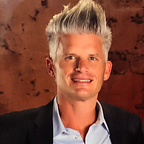Talking about learning helps cement the lesson.
When we go through a coaching session and drum up some good stuff, we are often quick to end it and get back to work. We’re eager and ready to implement what we’ve learned. Only not so fast. To make it hit home, we need time to ponder it, to contemplate it, to ask ourselves what we found most helpful. This is typically where the journaling comes in for reflection.
When we contemplate and reflect, we determine what was in the lesson that resonated with us. It is helpful, too, to discuss the lesson with either the coach or to take it and teach it to someone else. The See one, Do one, Teach one, learning method strikes true here. Nothing cements our learning like teaching what we know to someone else.
Community learning also cements the knowledge gained. Some teachers may not resonate with us. Some people’s particular style may not fit. So, take it to the community to find one that does. Masterminds are a perfect fit for these types of learnings. Bringing experts together, either online in forums or in person at events, is a great way to share expertise and to further propagate niche knowledge. Experts benefit by teaching others and sharing what they know while those with less experience or education in the niche topic learn from people who’ve been doing it for a long time. Further, the social support aspects of the Mastermind in helping each other out benefits the collective.
Talking about what we’ve learned, writing about what we’ve learned, even developing our own course and teaching others about what we’ve learned are excellent ways to make it stick. The creative socialization and sharing of this new knowledge keeps it fresh in our minds, and its newness enthuses us to share.
Remember when you first discovered how to do something that was stymieing you forever? And how excited you were when you finally overcame it? You wanted to not only go out and tell anyone who would listen, you wanted to teach them how you did it, too. You were joyous in victory, conquering the once-difficult task at hand. One day, you figured out how to do it, either by yourself or through a coach, and you then wanted to go forth and teach others so that they didn’t have to go through all the pain that you went through before. This is the essence of teaching and sharing what you know with others.
I could never do pull-ups. While I had worked-out regularly for years, I had rarely pushed myself to even try to do them. The pull-up always stymied me. I’d just hang there on the pull-up bar, like dead wood, unable to pull myself up. Worse than the physical inability to pull myself up was the mental inability to think I could do them. I didn’t believe I could do them. Why would I think I could when I had never done one successfully? The pull-up bar was always daunting to me. I’d shutter as I walked by it.
Then, one day, about halfway through a particularly energizing workout, I eyed the pullup bar and just said, “What the hell.” I approached it, jumped up to grab the bar, and pulled myself up rather rapidly. The new exercises I had been doing had conditioned me to pull myself up and I didn’t even know it. I was elated. One particular exercise that had stymied me for years I could now perform. The pull-up bar had been a source of fear for me and now it no longer was. Now, it is actually fun, like, Hey, let’s do some pull-ups for recreation. I glowed for weeks after that. I felt like the kid who could never climb the rope in P.E. class finally climbing that dang rope in front of his peers. It has been 18 months now, and I still think it is cool. It makes me wonder, what else am I capable of?
